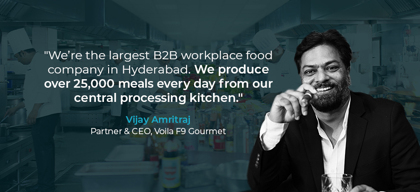Automation & Streamlining Processes Are Key for Retail Industry to Thrive

Retail
66 week ago — 4 min read
The COVID-19 pandemic changed the way we live our lives. The retail industry saw several challenges too, the main one being the rise and fall of demand from customers that resulted in a lot of anxiety.
Fortunately, we’ve bounced back and this is the lowest level of anxiety seen since the World Health Organization declared COVID-19 a global pandemic, forcing the world to go into lockdown. In this period, it’s not just retailers, but also customers that have changed. We’ve witnessed a change in customer mindset, organisational behaviour, organisational mindset, showing that we are imbibing change in a post-pandemic world.
Customers Are Keeping Retailers on Their Toes
One thing we’ve learned from the change in consumer behaviour is that retailers will continue to evolve themselves. We’re looking at the transition from multichannel to omnichannel, where the customer journey is seamless, irrespective of the platform on which they make their purchase.
As retailers, it is essential that we need to be clear and transparent when it comes to the product quality and our ability to service the customer. As a retailer, your merchandise quality has to be good, and your after-purchase service has to be good. This is how you will stand out in an ever-competitive market.
People are more informed about what works and what doesn’t. The idea of brand loyalty has disappeared, prompting retailers to continue brainstorming to meet the ever-changing demands of the customer.
As retailers, we’re also aware that people are more informed about what works and what doesn’t. The idea of brand loyalty has disappeared, prompting retailers to continue brainstorming to meet the ever-changing demands of the customer.
The Need for a 360-degree Digitised Approach
We need to digitise processes. This doesn’t include only consumer processes, but also back-end ones. There is a need to automate and create seamless agility, as customers have started being more vocal about their demands. Once these processes are streamlined, then we ensure that customers are satisfied.
There are plenty of opportunities for retail. But with these also come challenges. It has become more about merchandising product, and ensuring supply chain management. It’s also about the way you do your business. Today, we’re selling our brand, and not a single product. If we are to build brand better, then we need to create brand imaginary both online and offline that are independent of each other. We also need to prioritise the must haves and the good-to-haves. Once you prioritise, then you will reach your goals.
None of this will, however, be achieved unless you train your employees. Learning and developing your employees is a win-win for both of you, as they will deliver output for the investment you’ve made on them.
Currently, India has a per capita income of $2,200, and we’re expected to reach a per capita income of $4,500 by 2030. This gradual increase is driving more consumption, particularly in the lifestyle and apparel industries. We’ve already seen an increase in consumption in the food industry, but if there is an increase, it will be more for luxury food items.
If we are to ensure that the $4,500 per capita or more is to be achieved, then we need to start streamlining our processes. Once that is done, India will only thrive.
Also read:
Keys to success for retail sector in India
Article source: Article by Lalit Agarwal for STOrai Magazine. Lalit Agarwal is MD, V-Mart Retail Ltd. He made this speech at RISE 2022 in New Delhi
Disclaimer: The views and opinions expressed in this article are those of the author and do not necessarily reflect the views, official policy or position of GlobalLinker.
Most read this week


















Comments
Please login or Register to join the discussion